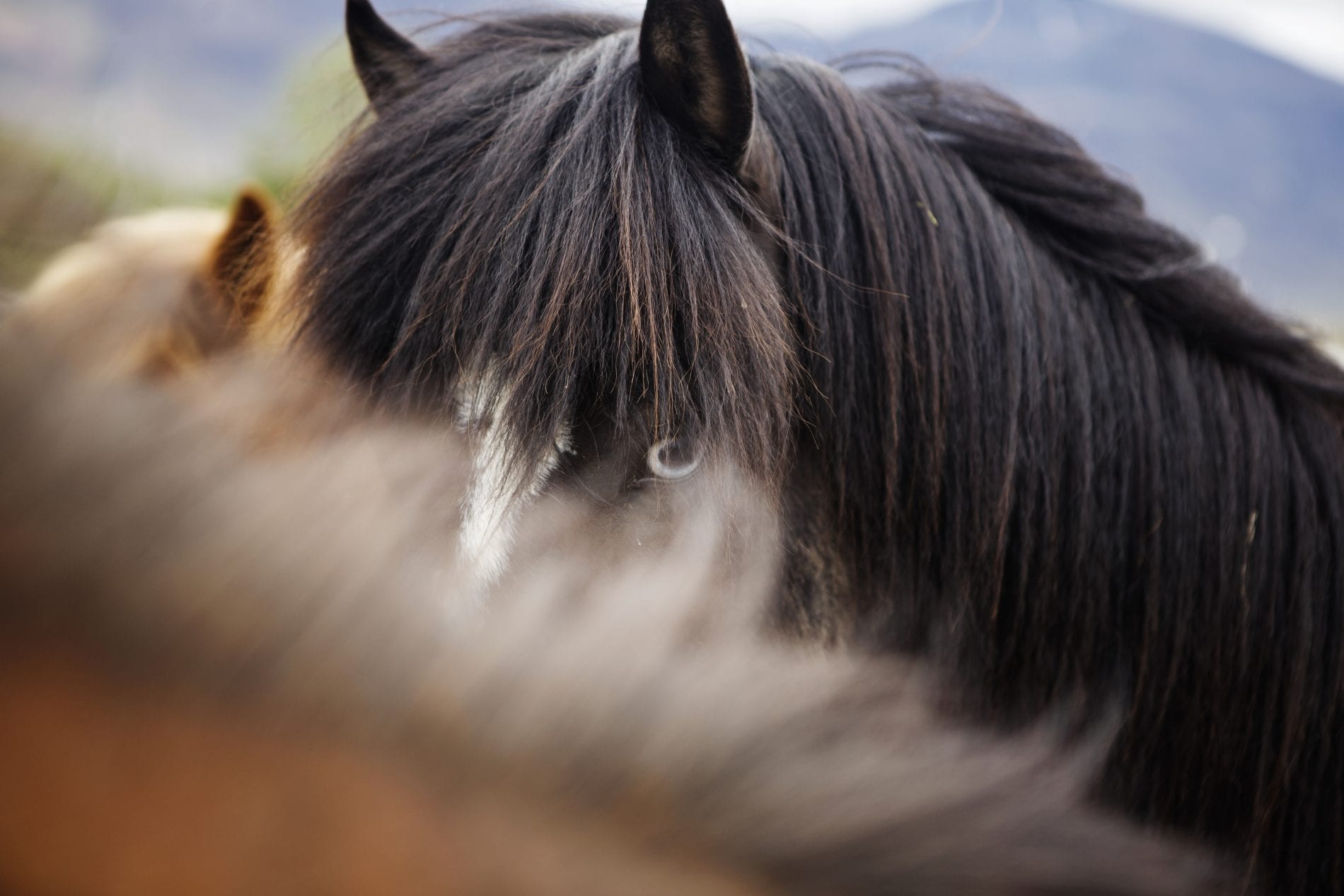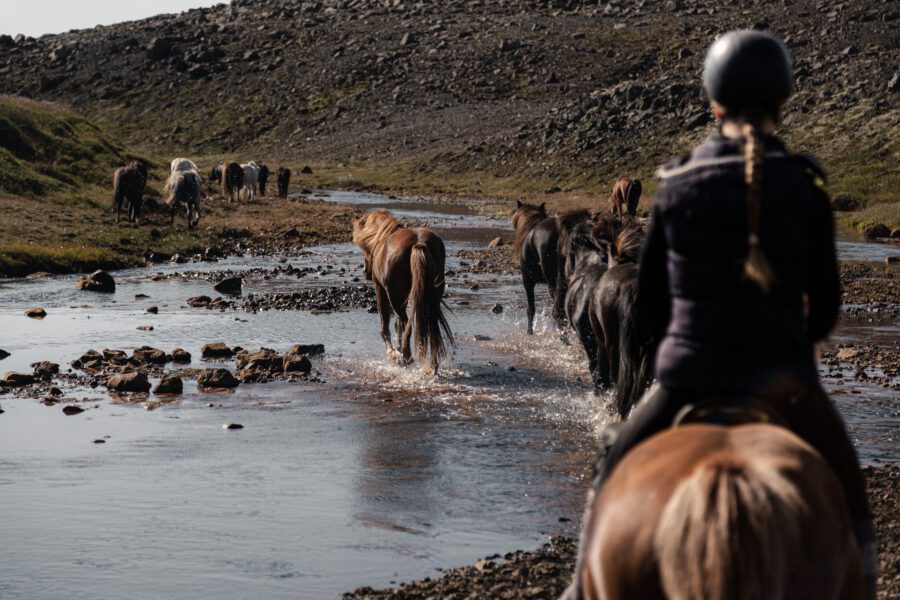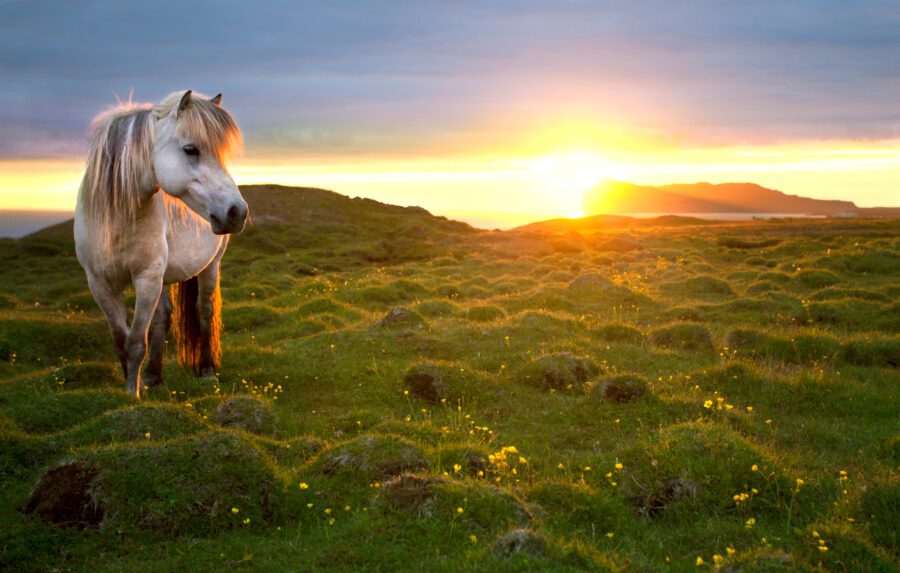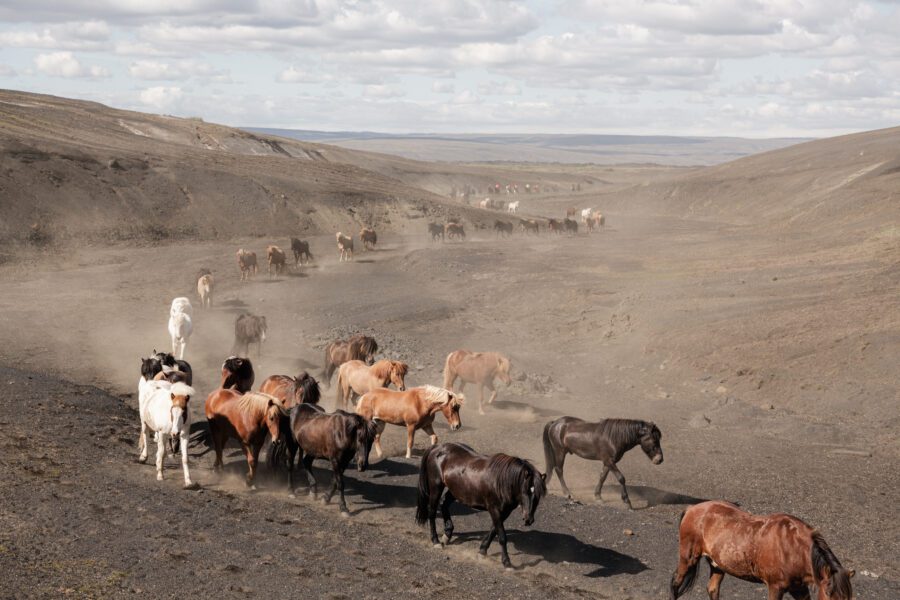
The Icelandic horse – a friendly herd animal
The Icelandic horses are herd animals and very social. They both connect to humans and to other horses. Their communication can furthermore both be positive and negative. For example, they greet one another by smelling the nostrils, groom each other or scratch. They neigh to one another and play together.
The horses choose friends among the herd which they stay close to in the field and play with. Most often they are of the same gender and age and even related, though that is not the case all the time. Even though the horses are social they interact negatively as well. Since there is some kind of hierarchy amongst herds they can bite, kick, and chase each other to show their social status for example. The next time you see a herd in Iceland on a windy day, take a look at how they are aligning up. The horses who are low in the hierarchy stand on the edge of the herd to shelter the ones who are higher in the hierarchy.
Training Icelandic horses
Training Icelandic horses usually start when they are 4 -5 years old and is completed around 7 years old. The horses are ridden until they are about 20 years old, some even longer if they are still healthy and strong. Each horse is different from one another when it comes to training. Some are very easy to train and others need more push and effort.
The Icelandic horse’s senses
The eyes
The eyes of the Icelandic horses is about 8 times bigger than the eyes of humans. Their visual field is 350˚, about 4 times more than humans. Horses have a great vision in the dark even better than in sunshine. Because their eyes are so big they can distinguish between shadows in the dark. Their eyesight is the best when they are about 7 years old and then it begins to fade. Horses have two blind spots, immediately in the back and in front of their face that makes them approach things differently than humans. Riders have to be careful when interacting with the horses in those blind spots so they won’t get startled. The horses often use one eye at a time to observe but move their heads to work out what is in front of them, therefore it is important to let them do that to explore their surroundings.
Sense of smell
In addition to great eyesight, the Icelandic horse has a great sense of smell. He uses it to figure out what is going on in front of him and to see if there is a danger ahead of him. A thirsty horse can smell water in a long-distance and can choose the most nutritious grass just by smelling it. He also uses his smell to communicate with other horses and to recognize horses and people. Therefore it is good to let the horses smell you when interacting with them.
The hearing
Icelandic horses have a great hearing as well as great eyesight and sense of smell. They can hear two noises at once with each ear and can move them about 180 degrees. Since they have a great hearing they do not like to be around to much noise and can startle with sudden noises. The horses can show how they feel with their ears. If they turn both ears back then something is bothering them and if they put them all the way back they want to attack another horse. It is always good to observe the horses we are interacting with to see how they are feeling, their posture and gestures can tell us a lot. Our tone of voice can make a difference when communicating with horses. We can cheer them on by using high pitch noises and calm them down by using a soothing and calm voice.
Icelandic Horses colors
´´ You can´t ride a color´´ Color breeding is not as important for Icelandic breeders as it is in many other countries. Icelandic breeders care more about how good riding horses they breed. Even though that is the case the Icelandic horse has over 40 different colors and more than 100 color variations which makes them so unique.
The distinction of the Icelandic horse
The Icelandic horse is most famous for its unique gaits Tölt and flying pace. But he has other characteristics that make him distinct from other breeds as well. Since the Icelandic horse was brought here by the first settlers in Iceland he has remained pure for centuries and is one of the purest breeds in the world. He has live in Iceland in harsh weather conditions which have made him unique. A study shows that the gastrointestinal of the Icelandic horse differs from other breeds and he can endure less nutrition for longer periods of time than other breeds. The horse’s hair is lubricated with fat so the rain runs down before their skin gets wet and cold and they grow thicker coats during the wintertime to keep them warm. Their body functions are slower when it is dark and cold like Icelandic winters mostly are and therefor store energy when they need it.
The Icelandic horse is known for being very sure-footed and sturdy. They have been walking on rough terrain and rocky ground for centuries and can even pick up their pace a bit when going over difficult ground. It is best to let the horse decide what gait he will use when going over rough terrain. All of these characteristics are due to the isolation on this Island where the horses have evolved and developed to survive throughout the centuries.


